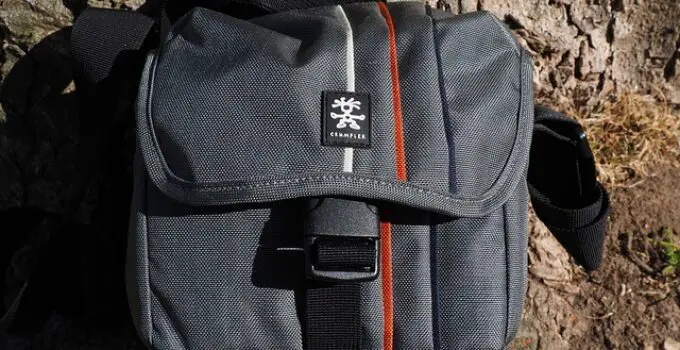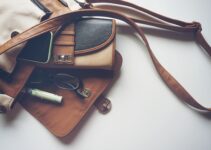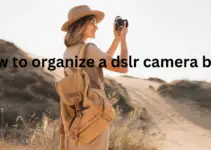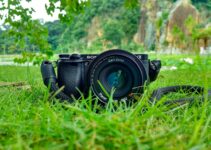Are you tired of carrying your camera around in a generic, boring bag? Why not make your own camera bag that is both stylish and functional?
In this article, we will guide you through the steps to create your own camera bag that will not only protect your gear but also make a statement.
To begin with, you will need some basic materials like fabric, foam padding, and a sewing machine. With these supplies, you can easily create a bag that fits your camera and accessories perfectly.
And the best part is, you can customize it to your liking with different colors, patterns, and textures.
But why settle for a store-bought camera bag when you can make your own that is both unique and affordable? By following our easy-to-follow steps and tips from expert DIYers, you can create a camera bag that reflects your personal style and provides the necessary protection for your valuable equipment.
So, are you ready to start creating your own camera bag? Let’s dive into the world of DIY camera bags and unleash your creativity!
How to make a camera bag? (12 proven steps)
We will cover each step in detail, including cutting the material, padding, lining the bag, the curved flap, Sam Brown buttons, front pocket, from flap to sides, insert, leather parts, shoulder strap, buckle, and side flaps.
Step 1: Cutting the Material
The first step in making a camera bag is cutting the material. You will need to cut two main pieces for the front and back of the bag, and two smaller pieces for the sides.
Additionally, you will need to cut a piece of foam to fit inside the bag to provide padding. You can use a variety of materials for the bag, including canvas, leather, or even recycled materials.
Step 2: Padding
Once you have cut the material, the next step is to add padding. Place the foam on the back piece of the bag and trace its shape. Cut the foam to fit the shape, and then glue it to the bag material. Repeat this step for the front piece of the bag.
Step 3: Lining the Bag
After adding padding, the next step is to line the bag. Cut a piece of lining material to fit the front and back pieces of the bag. Pin the lining material to the main bag material and sew it together. Make sure to leave an opening in the lining for turning the bag right side out later.
Step 4: The Curved Flap
The next step is to create the curved flap. Cut a piece of material for the flap and sew it to the top of the back piece of the bag. Make sure to leave some excess material on the sides of the flap for the Sam Brown buttons.
Step 5: Sam Brown Buttons
After sewing the flap, the next step is to add the Sam Brown buttons. Mark where the buttons will be on the front piece of the bag, and then sew the corresponding buttons to the flap.
Step 6: Front Pocket
To add a front pocket to the bag, cut a piece of material to the desired size and shape. Pin it to the front piece of the bag and sew it in place. Make sure to leave an opening for accessing the pocket later.

Step 7: From Flap to Sides
The next step is to sew the sides of the bag to the flap. Start at the top of the flap and sew down to the bottom of the bag. Repeat this step for both sides of the bag.
Step 8: Insert
After sewing the sides, the next step is to insert the lining into the bag. Turn the bag right side out through the opening in the lining, and then sew the opening closed.
Step 9: Leather Parts
To add some leather accents to the bag, cut a strap and some tabs out of leather. Attach the tabs to the sides of the bag, and then attach the strap to the tabs.
Step 10: Shoulder Strap
To make a shoulder strap for the bag, cut a long piece of material to the desired length and width. Fold it in half lengthwise and sew the edges together. Attach the strap to the bag using the Sam Brown buttons.
Step 11: Buckle
The buckle is an important component of a camera bag, as it helps to secure the bag and keep your camera safe. You will need a buckle set, which typically includes the buckle, a slider, and a D-ring.
To attach the buckle, first, measure and mark the placement of the buckle on the bag’s front flap. Then, using a leather punch, make holes for the prongs of the buckle. Insert the prongs through the holes and fold them down to secure the buckle.
Next, attach the slider to the shoulder strap. Thread the strap through the slider, fold it over, and sew it in place. The slider will allow you to adjust the length of the strap as needed.
Finally, attach the D-ring to the side of the bag using a leather punch and rivets. The D-ring can be used to attach additional accessories, such as a lens pouch or a tripod.
Step 12: Side Flaps
The side flaps of the camera bag help to protect the contents from the elements and add an extra layer of security. To make the side flaps, you will need two pieces of fabric cut to size.
First, fold over the top edge of each piece of fabric to create a hem. Sew the hem in place using a sewing machine or by hand. Then, place the fabric pieces right sides together and sew along the sides and bottom, leaving the top open.
Next, turn the fabric right side out and press it flat. Attach the side flaps to the bag by folding over the top edge and sewing it to the bag’s sides. Be sure to leave enough room for the buckle and D-ring.
Finally, add a strip of Velcro or a snap closure to the top of each side flap to keep it securely closed. With the side flaps in place, your camera bag will be complete and ready to use!
In conclusion, making a camera bag may seem like a daunting task, but with the right materials and some basic sewing skills, it is a rewarding and fun project.
By following these 12 steps and taking your time with each one, you can create a custom camera bag that meets your specific needs and style.
Remember to take care when cutting and sewing the material, and don’t hesitate to ask for help or guidance if you need it.
Let move to some realted FAQ’s.






